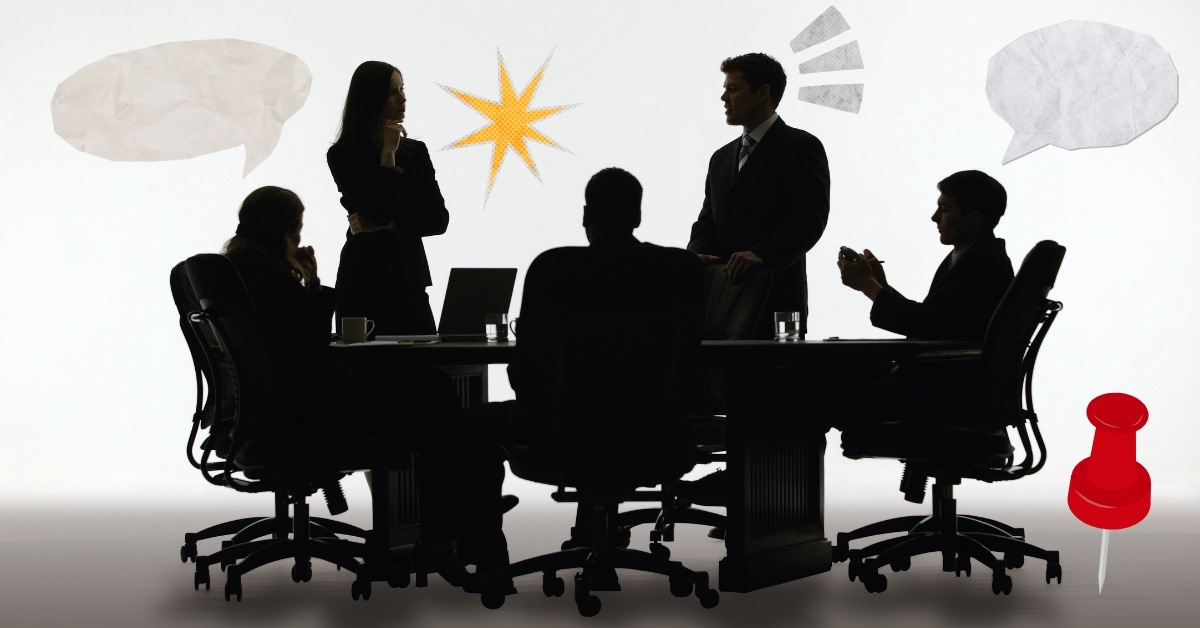Agenda templates are a must for everyone. Let me explain why…
Ever walked out of a meeting thinking, “Well, that could’ve been an email…”? You’re not alone. Ineffective meetings are a massive drain on time and morale. In fact, companies lose a staggering $37 billion annually to unproductive meetings. But it doesn’t have to be this way. The right agenda template can turn your meetings from tedious to transformational.
In this guide, you’ll find:
- Free, downloadable agenda templates for every scenario
- Expert tips to boost engagement and results
- Real-world examples and best practices (not just theory!)
Let’s help you run meetings that people actually look forward to. Or check out this other blog “Transform Your Next Client Meeting” if you’re interested in tips for client meetings specifically.
Why Every Meeting Needs an Agenda Template
While meetings are essential for teamwork, alignment, and progress, they can just as easily become a drain on everyone’s time if not run properly. An effective agenda isn’t just a formality; it’s the secret to keeping meetings focused, actionable, and worth attending. Here’s why every meeting should start with a solid agenda:

The Hidden Cost of Bad Meetings
The numbers are brutal: besides the fact that businesses have proven to lose money to unproductive meetings, 72% of meetings are considered to be ineffective by 5,000 knowledge workers across 4 continents. That’s not just a statistic, it’s a wake-up call for teams everywhere. According to Atlassian:
“Our research revealed that the meeting culture at most organizations actually makes it harder for teams to reach their goals.”
… So “bad meetings” cost money, and stress out your workers. Then what are most companies doing wrong? Probably the fact that these don’t have a common goal and other people’s time is being dismissed during an 8hr shift.
Common Pitfalls Without an Agenda
- Vague objectives: “What are we even here for?”
- No structure: Conversations drift, time overruns, and nobody’s sure what’s been decided.
Fun fact:
“Data shows that only 21% of meetings include agendas with 1-500 characters, underscoring how rarely agendas provide the necessary structure”
- Disengagement: Key voices get drowned out, and others tune out. Learn more ways how AI for Teams can keep your meetings interesting.
- No action: Meetings end without clear next steps.
No agenda? That’s a recipe for frustration and wasted time. And this is not because someone intentionally wants it that way, it’s just that we are all social beings and it’s very easy to drift away…
“The Meeting That Could’ve Been an Email”
Imagine this: It’s 10:00 a.m. on a Tuesday. You join another video call, coffee in hand, hoping to finally tackle your to-do list afterwards. But as the minutes drag on, you realize you’re not alone in your frustration—
- 65% of your peers are thinking, “These meetings keep me from getting real work done”.
- 71% feel the meeting is unproductive or just plain inefficient.
- Over half the people on the call will leave without knowing what to do next.
- Also, nearly 43% of respondents might be complaining that some people tend to dominate the conversation.
Sound familiar? The sad truth is, you’re not experiencing an outlier—it’s the norm. Most meetings are simple nor properly prepped. No wonder so many of us check our email, tune out, or wonder why we were invited at all.
The fix? A clear agenda, shared in advance, with time-boxed topics and defined outcomes. Simple; yet it can turn meeting dread into meeting done.
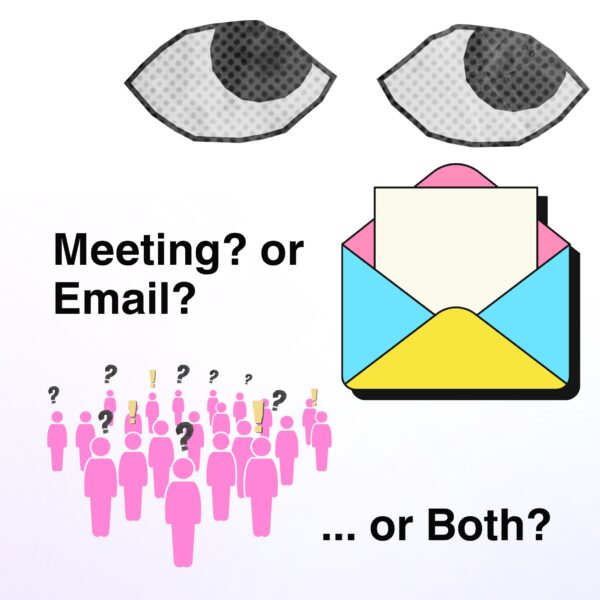
Core Principles of Effective Agenda Templates
Meetings can be a powerful force for alignment and momentum – but only if they’re well-structured. Without a clear plan, it’s easy for discussions to spiral, decisions to get delayed, and valuable time to be wasted. The best teams know that effective meetings don’t happen by accident; they’re built on a handful of proven principles that keep everyone focused, engaged, and moving forward.
1. Define Purpose & Desired Outcomes
Before you schedule, ask: “Do we really need a meeting?” If the answer is yes, define what success looks like. Is it a decision, a brainstorm, or just an update? Here’s a great way of seeing it expressed by a deleted reddit user in the thread r/productmanagement:
“A meeting needs an objective of such a type that is most effectively achieved through active discussion and immediate feedback.
2. Strategic Attendee Selection
Invite only those who contribute, decide, or are directly affected by decisions being taken during the call. Fewer attendees = more focus.
3. Pre-Meeting Communication & Preparation
Send out the agenda at least 24 hours in advance. Include pre-reads and let participants know what’s expected of them. Some meeting platforms like Google Meet allow you to add the agenda in the Calendar invite, which is highly recommended. What to do if several team members don’t read these notes before-hand? Another Reedit user recently shared the following tip:
“I review the agenda and goals of the call at the start of every meeting. I have it on the screen.. a lot of times I just ask if there’s any questions about the agenda or goals. Usually there aren’t and we just jump right in on agenda item 1. It also keeps the meeting on track… I can easily say “let’s park that conversation until after we get through the rest of the agenda items.” – fpuni107 •
4. Structuring the Agenda for Engagement
A strong agenda covers:
- Meeting goal
- Agenda items (with time estimates)
- Owner/presenter for each topic
- Space for notes and action items
- Invitees accepted the meeting or confirmed their assistance
- Invitees submitted their items beforehand
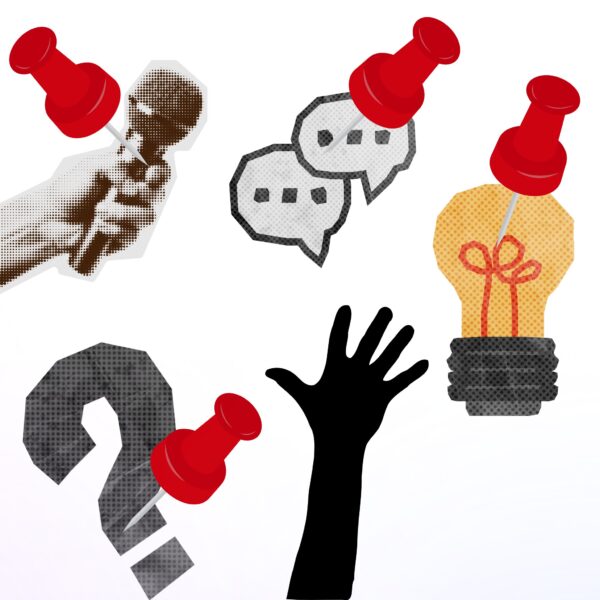
Check out this super simple sample structure inspired by Zoom Blog page:
| Time | Topic | Owner | Notes/Actions |
| 5 min | Welcome & Purpose | Lead | |
| 10 min | Updates | All | |
| 20 min | Discussion/Decisions | Various | |
| 5 min | Next Steps & Close | Lead |
Real-World Scenario: The Domino Effect
Picture this: A marketing team schedules a “quick” weekly sync. There’s no agenda, so the first 10 minutes are spent rehashing last week’s issues. The conversation bounces from campaign updates to budget worries, then veers off into a spirited debate about office snacks. By the end, most people are left wondering what the actual point of the meeting was—and what they’re supposed to do next.
At this point, they might have to meet again amongst themselves to figure out separately what each should be doing. Some might even feel embarrassed to ask in the shared group chat what the instructions were so they’ll just text their closest co-worker and figure it out together.
Now imagine the same team – only this time, with a clear agenda sent in advance. Every topic is time-boxed. Action items are tracked as they come up. The meeting wraps up early, and everyone leaves knowing exactly what they’re responsible for. Everybody leaves the meeting feeling GOOD.
That’s the difference a few core principles (and a good agenda) can make.
Downloadable Agenda Templates for Every Need
Ready to save time? Below you’ll find two ways to supercharge your next meeting; whether you want immediate slides or classic agenda docs.
Instantly Turn Any Agenda Into a Pro Slide Deck
If you want to go straight from agenda idea to meeting-ready presentation, we’ve made it easy. For every common meeting type, you’ll find a matching AI prompt below.
Just copy the prompt, paste it into Aurora Slides (or your favorite AI deck generator), and you’ll instantly get a clean, structured slide deck; no design skills required!
Pro Tip: These prompts are designed to work perfectly with the downloadable templates at the bottom of this section. Use them together for seamless preparation and presentation.
Team Meeting Agenda Prompt
“Create a professional slide deck for a Team Meeting with the following structure:
- Slide 1: Meeting Title, Date, Time, Location/Link, Facilitator, Attendees, Objectives of the meeting.
- Slide 2: Agenda Overview—list all agenda items with presenter names and time allocations.
- Slide 3: Action Items—table listing new action items, terms, descriptions, owners, and due dates.
- Slide 4: Next Steps & Reminders.
- Slide 5: Reminder for the AI note taker to join the meeting.
Use a clean, modern visual style with clear section headers and space for notes.”
Weekly Team Meeting Agenda Prompt
“Make a visually engaging slide deck for a Weekly Team Meeting that includes:
- Slide 1: Meeting Date, Time, Location/Link, Attendees.
- Slide 2: Achievements of the Week—highlight key team and individual wins.
- Slide 3: Goal Progress Review—table showing each goal, mark/target, this week’s progress, and next week’s goal.
- Slide 4: Review of Previous Action Items—list items, owners, and statuses.
- Slide 5: Challenges & Roadblocks—bullets for team to discuss.
- Slide 6: Team Member Updates—space for each member to share progress and needs.
- Slide 7: New Business / Open Discussion.
- Slide 8: Action Items & Next Steps.
Design with a collaborative, energetic vibe and use icons for achievements and goals.”
Staff Meeting Agenda Prompt
“Generate a clear, concise slide deck for a Staff Meeting structured as follows:
- Slide 1: Meeting Date, Time, Location/Link, Attendees.
- Slide 2: Welcome & Announcements—company news and upcoming events.
- Slide 3: Last Month’s Achievements—bullets for major accomplishments.
- Slide 4: Finished/Closed Action Items—table of completed tasks or projects.
- Slide 5: Training/Housekeeping—section for brief training topics or updates.
- Slide 6: Administrative/Policy Review—key policy or procedure changes.
- Slide 7: Staff Feedback & Q&A—space for questions and discussion.
- Slide 8: Action Items & Next Steps—list tasks, owners, and deadlines.”
Performance Review Discussion Prompt
“Create a focused slide deck for a Performance Review Discussion, using this outline:
- Slide 1: Employee Name, Reviewer/Manager, Review Date, Position/Department.
- Slide 2: Review of Previous Performance Goals—table with each goal, manager’s assessment, and employee’s comments.
- Slide 3: Strengths & Accomplishments—bullets for what the employee has done well.
- Slide 4: Areas for Improvement—bullets for growth opportunities.
- Slide 5: Employee Feedback/Concerns—space for employee’s own input.
- Slide 6: New Performance Goals—table listing new goals, support needed, and due dates/review schedule.
- Slide 7: Next Review Date & Agreed Next Steps.”
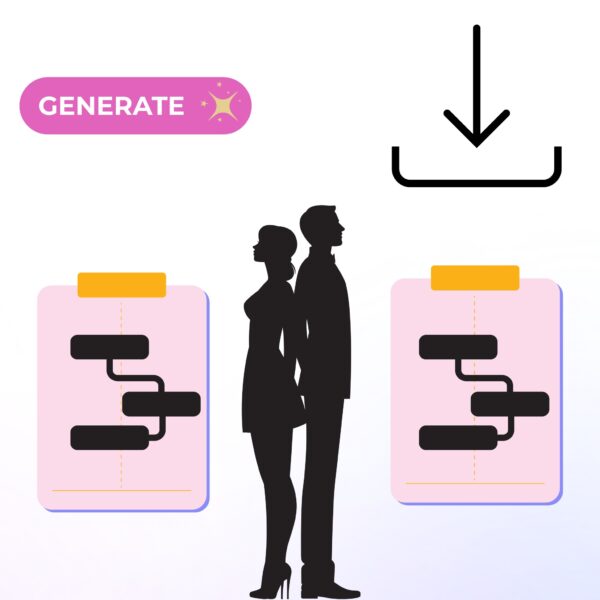
Prefer a Classic Agenda Document?
If you’d rather start with a ready-to-edit agenda file, scroll down to find downloadable templates for each meeting type. They’re available in PDF formats, so you can easily copy & paste and later, customize for your workflow.
How to use this section:
- Option 1: Start with the agenda template, then use the matching prompt above to turn your doc into a slide deck with Aurora Slides.
- Option 2: Skip the slides and simply download, customize, and share the agenda file with your team.
1. Team Meeting Agenda Template
- Best for: General team meetings (weekly, monthly, project kickoffs).
- Download: Team Meeting Agenda Template _ Aurora
- Tip: Copy the “Team Meeting” prompt above to instantly turn this agenda into a professional slide deck with Aurora Slides.
2. Weekly Team Meeting Agenda Template
- Best for: Recurring team/department check-ins.
- Download: Weekly Team Meeting Agenda Template _ Aurora
- Tip: Use the Weekly Team Meeting prompt above for a ready-made slide deck.
3. Staff Meeting Agenda Template
- Best for: Staff/admin/operational meetings.
- Download: Staff Meeting Agenda Template _ Aurora
- Tip: Instantly create a slide deck by copying the Staff Meeting prompt above.
4. Performance Review Discussion Plan Template
- Best for: 1:1 performance reviews and feedback.
- Download: Performance Review Discussion Plan Template _ Aurora
- Tip: Use the Performance Review prompt above for a dynamic review presentation.
- Pro Tip: Make sure to review “The Best One on One Meeting Template for Managers”
Whether you want instant slides or a classic agenda doc, you can mix and match prompts and templates to fit your meeting prep style. Use the prompts to jump straight into presenting, or download a template, customize it, and generate your slides when you’re ready.
From Agenda to Presentation
Downloaded your agenda template? Aurora Slides is the fastest way to transform it into a polished, professional slide deck; no design skills needed.
Just copy the matching AI prompt, paste it into Aurora Slides, and watch as your agenda instantly becomes a clear, visually engaging presentation. Aurora’s AI organizes your content, applies professional layouts, and keeps your brand looking sharp—saving you time and stress before every meeting.
Why use Aurora Slides?
- Go from messy notes to finished deck in minutes.
- No more formatting headaches or last-minute slide rushes.
- Share, present, and collaborate with your team—effortlessly.
Pro Tip: Every agenda template above comes with a ready-to-use AI prompt. Paste it into Aurora Slides and you’re meeting-ready.
See Aurora Slides in action here → Or just drop us a DM with your questions.
How to Customize Agenda Templates for Your Team’s Needs
Not every meeting needs the same agenda. It’s important to align your agenda template with the purpose and expectations of your specific meeting. For example, if you are planning on conducting a Formal Meeting, attendees may expect formal records; such as official minutes or signed attendance sheets—to be distributed or archived for future reference.
This is common in legal, compliance, or high-level negotiations like mergers, where documentation serves both as a reference and proof of decisions made. In contrast, for informal or recurring team check-ins, participants might only anticipate a brief agenda and actionable notes.
Remember, attendee expectations go beyond just the conversation. People may behave differently depending on the meeting’s context, the level of formality, and whether documentation (like handouts, reports, or follow-up summaries) is provided in advance, during, or after the meeting. Proactively sharing the agenda is always a must—it sets clear expectations, helps everyone prepare, and ensures all voices are heard.
The more you anticipate and meet attendees’ documentation needs, the smoother and more productive your meetings will be.
Meeting Type Table
|
Meeting Type
|
Best Template
|
Common Attendee Expectations & Required Documentation
|
|---|---|---|
|
Weekly Check-In
|
Weekly Team Meeting
|
Agenda (always), brief action list, team updates, sometimes a summary email. No formal minutes required.
|
|
Decision-Making
|
Decision-Making Template
|
Agenda (always), background docs, decision log, voting sheets if needed, and formal meeting minutes (often signed or shared).
|
|
Performance Check-in
|
Performance Review Discussion Plan Template
|
Agenda (always), performance reports, feedback forms, documented goals, and signed acknowledgment of review (sometimes required).
|
|
Project Planning / Project Check-in
|
Planning Meeting Template
|
Agenda (always), project plan drafts, timelines, resource lists, risk assessment documents, and follow-up action item tracker.
|
|
Formal Meeting (e.g. legal/board)
|
Custom/Board Meeting Agenda Template
|
Agenda (always), official minutes, attendance sheets, handouts, signed resolutions, and any compliance forms as required.
|
Notes:
- The agenda is required for all meetings; digital or printed, always shared in advance.
- Formal meetings (legal, board, etc.) have the highest documentation requirements.
- Include specifics like signed forms, handouts, or digital follow-up depending on context.
Adapting for Remote, Hybrid, or In-Person Teams
- Use shared docs and screen sharing
- Assign a virtual facilitator
- Encourage video-on, everybody showing their faces (this just makes everyone feel better)
- Use interactive tools like polls, games, Q&A sessions, or breakout rooms (if applicable)
Expert Tips for Running Productive Meetings
Running a great meeting isn’t just about having the right agenda—it’s also about how you guide your team through it. Whether you’re a seasoned facilitator or just want to make your next meeting more effective, these actionable tips will help you keep things focused, fair, and genuinely productive.
Facilitation and Time Management Best Practices
Facilitating a meeting is more than just steering the conversation—it’s about creating a space where everyone can contribute, decisions get made, and nobody feels like their time was wasted. Here’s how top facilitators keep meetings productive and energizing:
- Start and end on time: Respecting the clock sets the tone. If you start late, you’re signaling that people’s time isn’t valuable. If you run over, you create stress and invite multitasking. Pro tip: Set a timer and give a 5-minute warning as you approach the end.
- Assign a timekeeper: Even the best facilitators get caught up in conversation. Designate someone to watch the clock and keep the group honest about time limits for each agenda item.
- Use action-oriented agenda items: Vague topics (“Update on projects”) lead to vague outcomes. Instead, phrase agenda points as questions or decisions (“Should we launch the campaign next Tuesday?” or “Decide on Q3 priorities”). You can handle these misdirections in a polite way by asking a clarifying question.
- Balance voices in the room: Great facilitators notice who isn’t speaking up and invite their input. A simple, “Let’s hear from someone who hasn’t weighed in yet” can unlock valuable perspectives.
- Park off-topic issues: If a conversation drifts, capture it in a “parking lot” and move on. This shows you value all ideas but keeps the group focused on the agenda.
- Take advantage of technology: There are so many tools available to interpret, store and present information to teams in ways that keep them engaged without taking more of their time. If you want to learn creative ideas on how to use these; go to our Learning Vault and explore.
- Summarize and clarify next steps: At the end of each topic, quickly recap decisions and assign action items. It prevents confusion and ensures accountability.
“… time is the scarcest resource in any company—after all, no amount of money can buy a 25-hour day” – Harvard Business Review
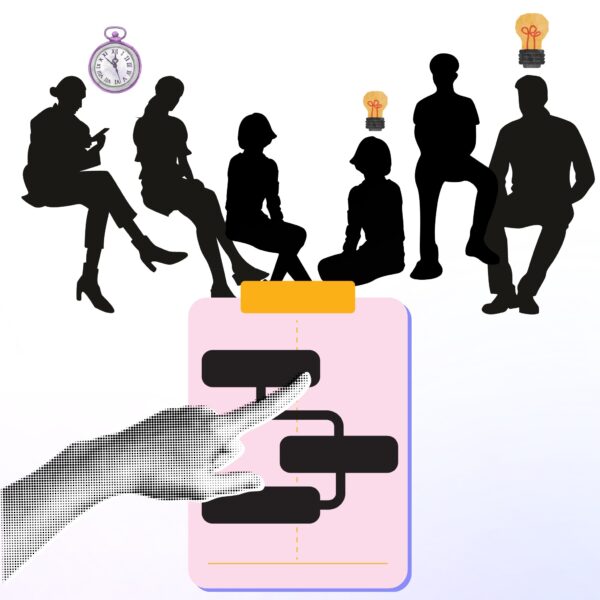
Ensuring Accountability and Follow-Through
A meeting is only as good as the actions it produces. Without clear ownership and deadlines, even the best discussions quickly fade into the background noise of a busy workweek. That’s why top teams treat accountability as part of the meeting process—not just an afterthought.
Assign, Track, and Revisit Action Items
After every meeting, make sure each action item is:
- Clearly defined (what needs to happen)
- Assigned to a specific owner (who’s responsible)
- Given a deadline (by when)
- Tracked in a visible place (so nothing slips through the cracks)
- What’s new in your top three priorities?
A simple action tracker, shared live during the meeting or in follow-up notes; keeps everyone on the same page. This a super simple example below:
| Action Item | Owner | Due Date | Status |
|---|---|---|---|
| Send recap email | Jordan | 6/7/2025 | Pending |
| Update project plan | Priya | 6/10/2025 | In Progress |
| Book next meeting | Alex | 6/12/2025 | Complete |
Don’t Let Action Items Die in the Inbox
Seasoned facilitators kick off the next meeting by quickly reviewing last week’s action items. What got done? What’s still in progress? This “close the loop” moment builds trust and momentum, and shows the team that follow-through matters.
Takeaway:
Make accountability public and maintain momentum. Your projects, and your team, will thank you.
Conclusion
The right agenda template is more than a document—it’s your roadmap to meetings that actually work.
Download your templates, put these tips into action, and watch your meetings become shorter, sharper, and more productive.
If you’ve found these resources helpful, share your feedback—and sign up for more expert meeting strategies delivered monthly.
P.S. Want custom-branded or scenario-specific agenda templates? Let us know what would make your team unstoppable.
Frequently Asked Questions (FAQs)
What should be included in a meeting agenda template?
A: Clear objectives, topics, owners, timeframes, and space for notes and actions. However, the more high-level the meeting the more you should be sharing the agenda with the attendees a week before or a few days before to get their input on the items or suggest changes.
How do I choose the right agenda template for my meeting?
A: Match the template to your meeting goal and team’s workflow. After a few meetings ask your team for feedback: their opinions could show you some great insights.
Can I use past meeting transcripts to create an upcoming meeting agenda?
A: Absolutely! That’s a great idea actually. Just make sure to follow best practices and use the right tools. You can learn more about it in Generating PowerPoint Slides from a Manuscript.
How do I keep meetings on track using an agenda?
A: Stick to time blocks, assign a facilitator, and use a “parking lot” for off-topic ideas. Plan ahead of time the “how” and “desired outcome” parts of the item.
What are Aurora Slides and how do they relate to agenda templates?
A: Aurora Slides are dynamic, cloud-based documents that can update in real time and integrate with other tools. You can use these to create interactive agenda templates, allowing team members to collaborate, comment, and track changes before, during, and after meetings.
Can I turn my agenda templates into Aurora Slides for better collaboration?
A: Yes! Most agenda templates can be converted into Aurora Slides using the prompts shared above. But if you would like to create your own prompt for a very specific meeting, or style I recommend you check out our Google Prompt Engineering Guide and then test these with Aurora Slides or your preferred AI Deck Builder.
